In the fast paced world of the 21st century, a Eucharistic procession can be hard to understand. A group of people walking behind a monstrance, some singing, some praying, some silent, all following… something.
To the passerby, it looks out of place—anachronistic, even; something not of this time.
Time seems to stand still as beautifully stitched fabric, with ornate gold and interesting textures, flows in the breeze.
But then the procession passes a gas station, and the reality of the modern world comes back. The contrast is startling. And yet, there’s something here; a longing.
This is the National Eucharistic Pilgrimage.
For the second time in two years, an unprecedented multistate Catholic pilgrimage has traversed the nation, this time weaving its way from Indianapolis, Indiana, to Los Angeles, California, making stops in local towns across the country.
The mission is to bring revival.
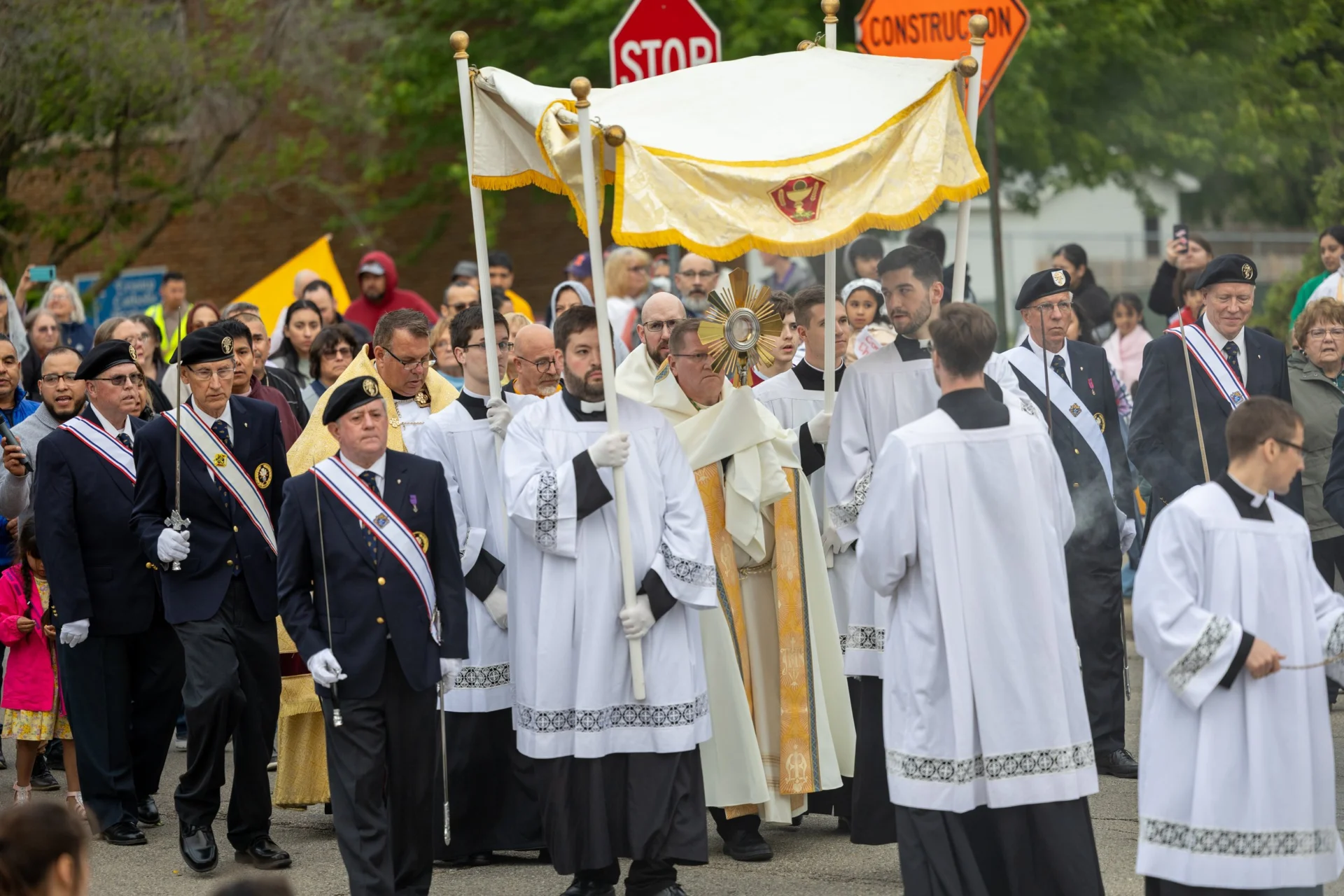
I. Going across America
“…We trust that God has profound blessings and graces in store for us as we journey with Jesus…”
The Drexel Route of the National Eucharistic Pilgrimage began on May 18th in Indianapolis, but the revival started much sooner.
With a mission to inspire, educate, and unite Catholics in Eucharistic faith, the National Eucharistic Revival is a three-year campaign by the United States Conference of Catholic Bishops (USCCB). Part of this campaign included the National Eucharistic Congress (the first national congress since 1941), and a national pilgrimage with four different routes in 2024.
Now in 2025, the Pilgrimage came back. This time focused on a single route from Indiana to California.
According to the Pilgrimage, it was “the outpouring of stories involving our Eucharistic Lord’s healing, conversion, unity, and peace along the 2024 pilgrimage routes” that inspired the 2025 Pilgrimage.
“We trust that God has profound blessings and graces in store for us as we journey with Jesus through cities and towns nationwide again this summer,” said Jason Shanks, President of the National Eucharistic Congress.
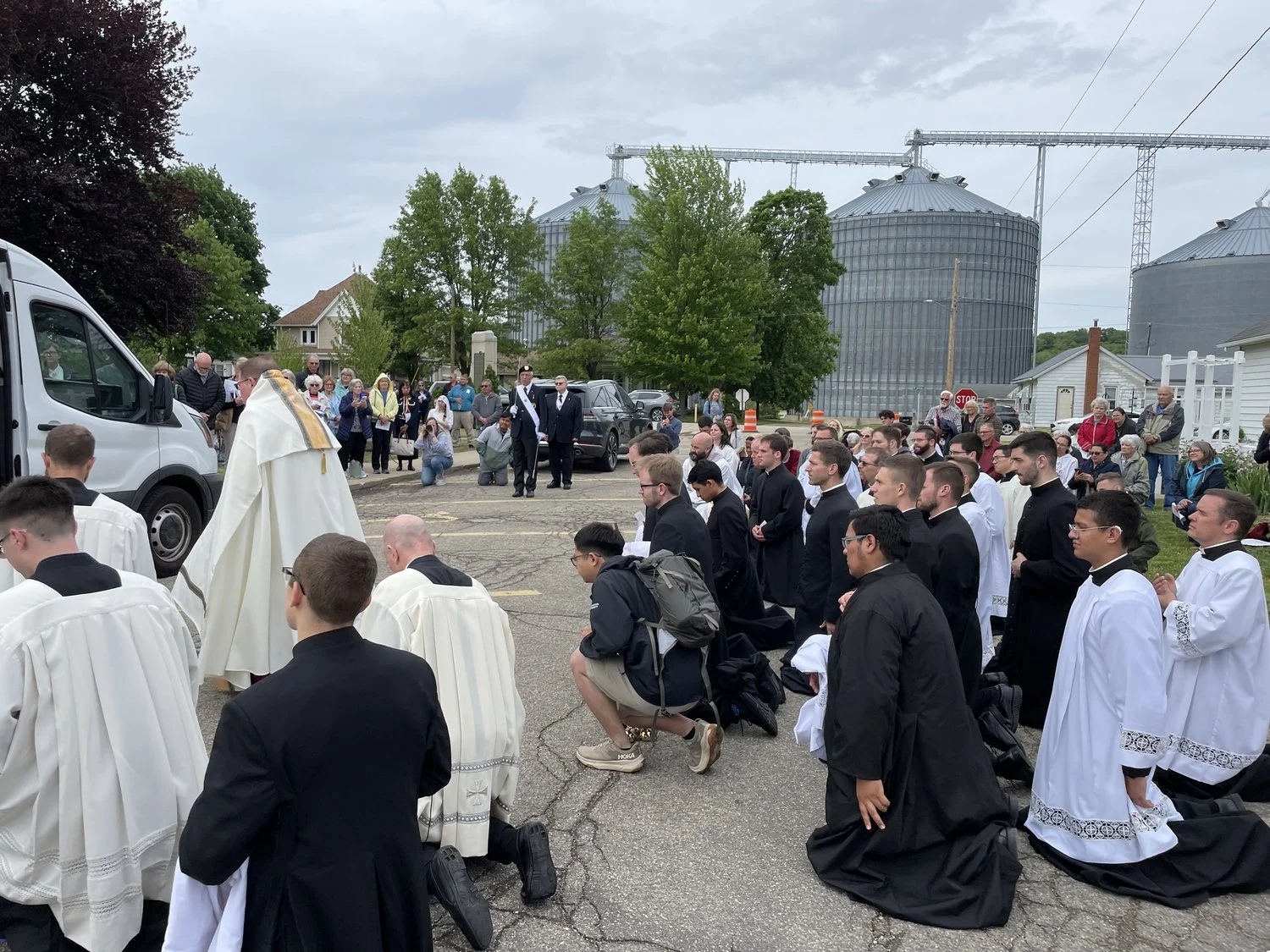
As in the 2024 event, a small group of carefully chosen young adults, “perpetual pilgrims,” eight in total, were entrusted to travel the full path.
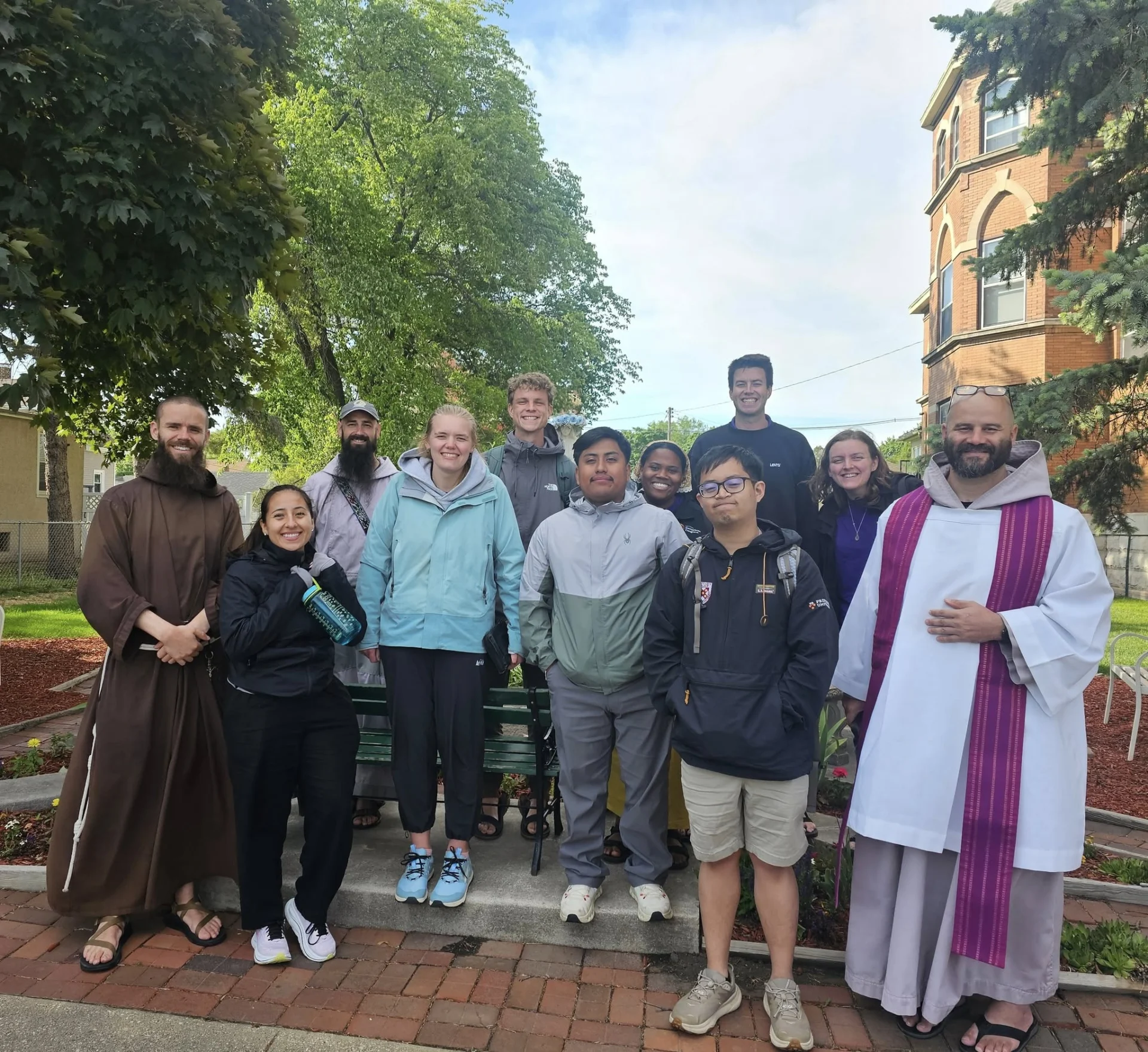
“This small, dedicated group will travel full-time from mid-May through the end of June, accompanying Jesus as he draws near to countless communities across the nation,” wrote the Pilgrimage.
The national scope of the event is immense, but the real purpose is revival inside the pews.
Catholics throughout the country were encouraged to participate in the Pilgrimage at numerous events across the Country. It is by zooming into stops along the route that one can see the impact of this effort.
One location was the Diocese of Peoria in north central Illinois, which is currently celebrating its 150th anniversary.
The town of El Paso, within the diocese, is the birthplace of Ven. Fulton Sheen whose Emmy Award-winning primetime show Life is Worth Living captivated millions during its run on ABC until 1957. That a revival of faith should pass through this rural stretch of Illinois feels especially appropriate, given Sheen’s lifelong devotion to the Blessed Sacrament.
“Being the home of the Venerable Archbishop Fulton Sheen who promoted a great devotion to Jesus in the Eucharist through a daily Holy Hour,” wrote Bishop Louis Tylka, Bishop of Peoria, “I believe Peoria is a great place for this pilgrimage to pass through.”
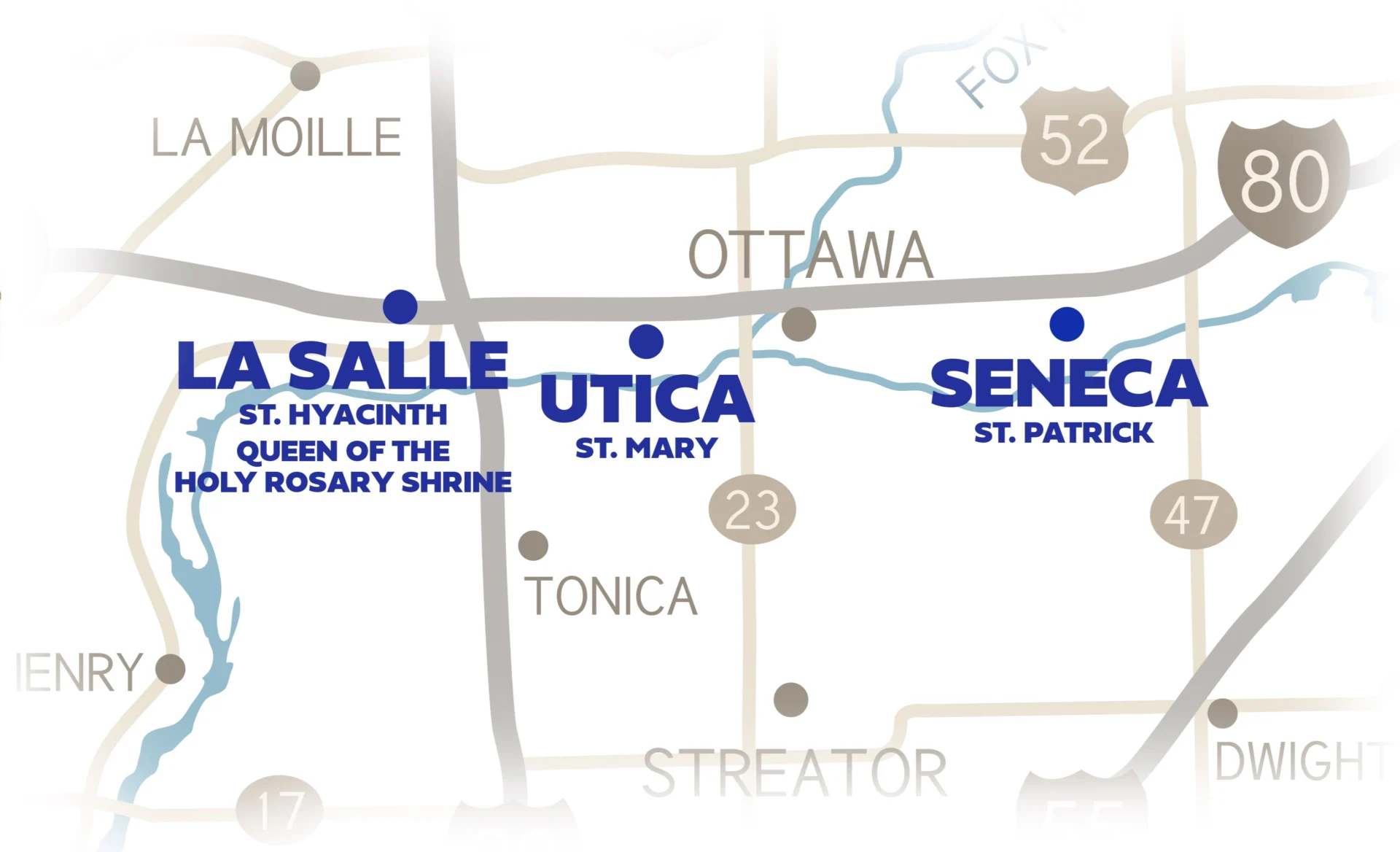
II. La Salle, Illinois
“…there was a feeling of unity; a closeness to one another and to something greater…”
At the end of May, the Pilgrimage entered the Diocese of Peoria – The third diocese in what would be a twenty-diocese trip. The journey began in Seneca, Illinois, where the Bishop of Peoria received the Eucharist from the Bishop of Joliet. After a brief time of reflection in Adoration, the journey across Peoria to the Diocese of Davenport began.
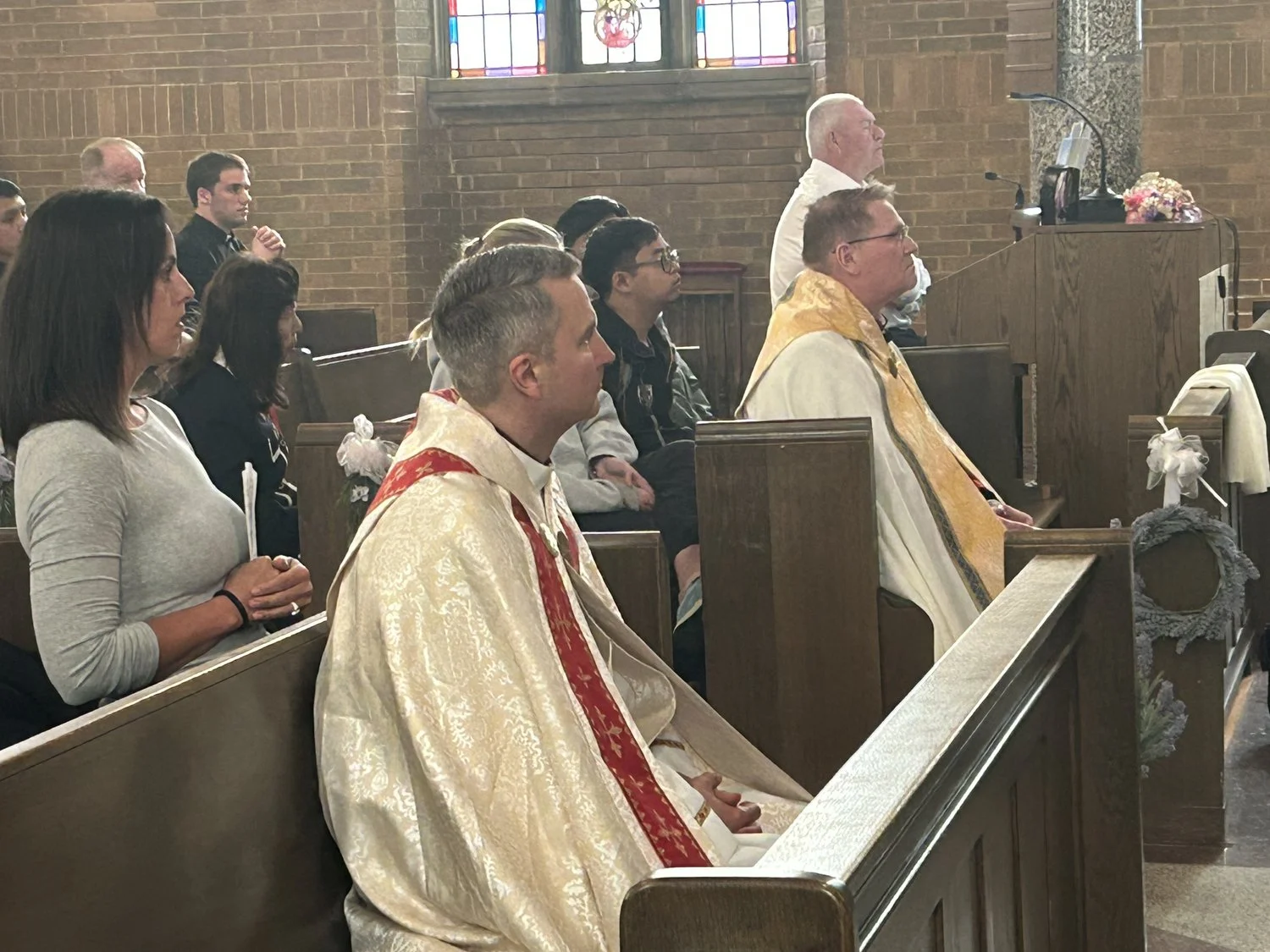
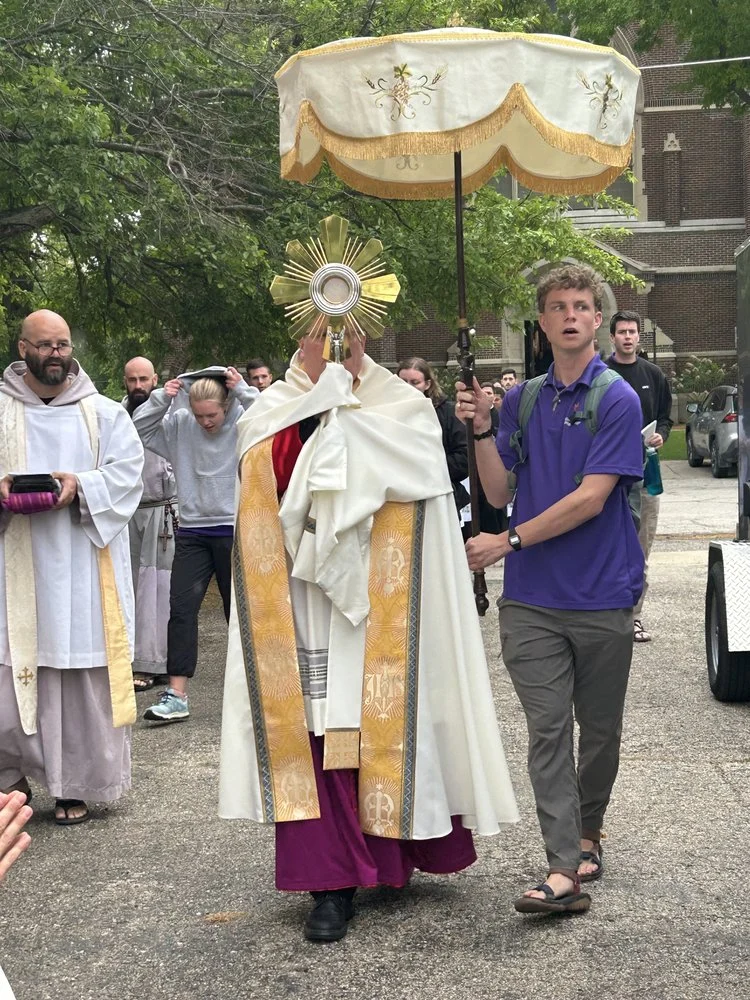
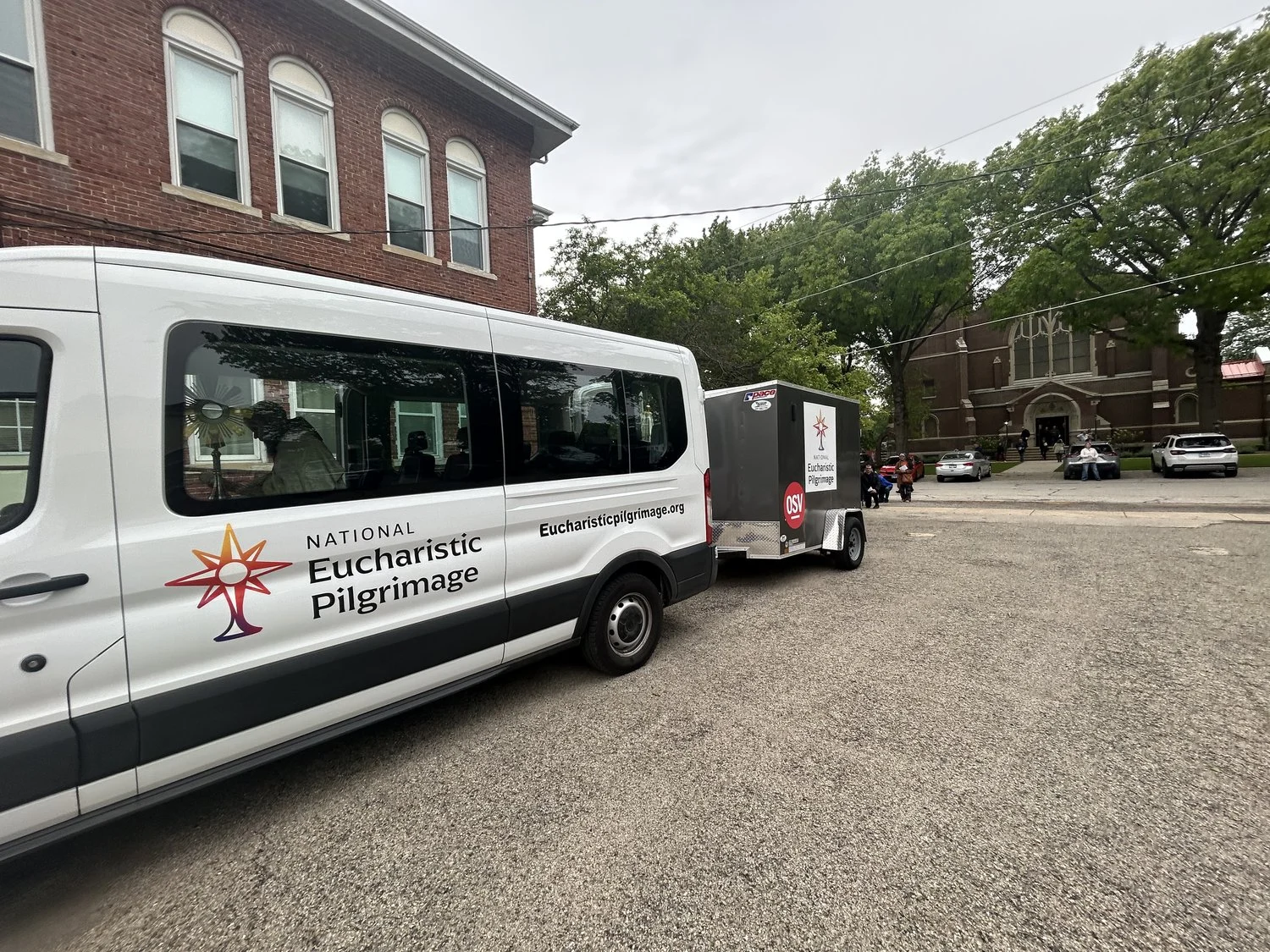
Over the course of three days, the Eucharistic procession moved steadily through the region, as the Monstrance traveled lovingly from one location to the next, providing each a unique encounter with the Eucharist.
The last stop on the first day within the Diocese was St. John Baptist de La Salle parish in La Salle, Illinois. A vibrant Catholic community, the parish includes two churches and a shrine, each with its own rich history.
The Eucharist arrived in La Salle at the historic church of St. Hyacinth for Mass of Thanksgiving.
The church started as a humble wood-frame building in 1874 to provide a parish home for Polish immigrants who advocated for its creation. A devastating fire on the Sunday after Christmas in 1890 led to the construction of a brick building, and through the years, the church has seen generations of people pass through its congregation.
Now, the building was full of pilgrims, waiting for Mass to start and excited to be a part of something historic.
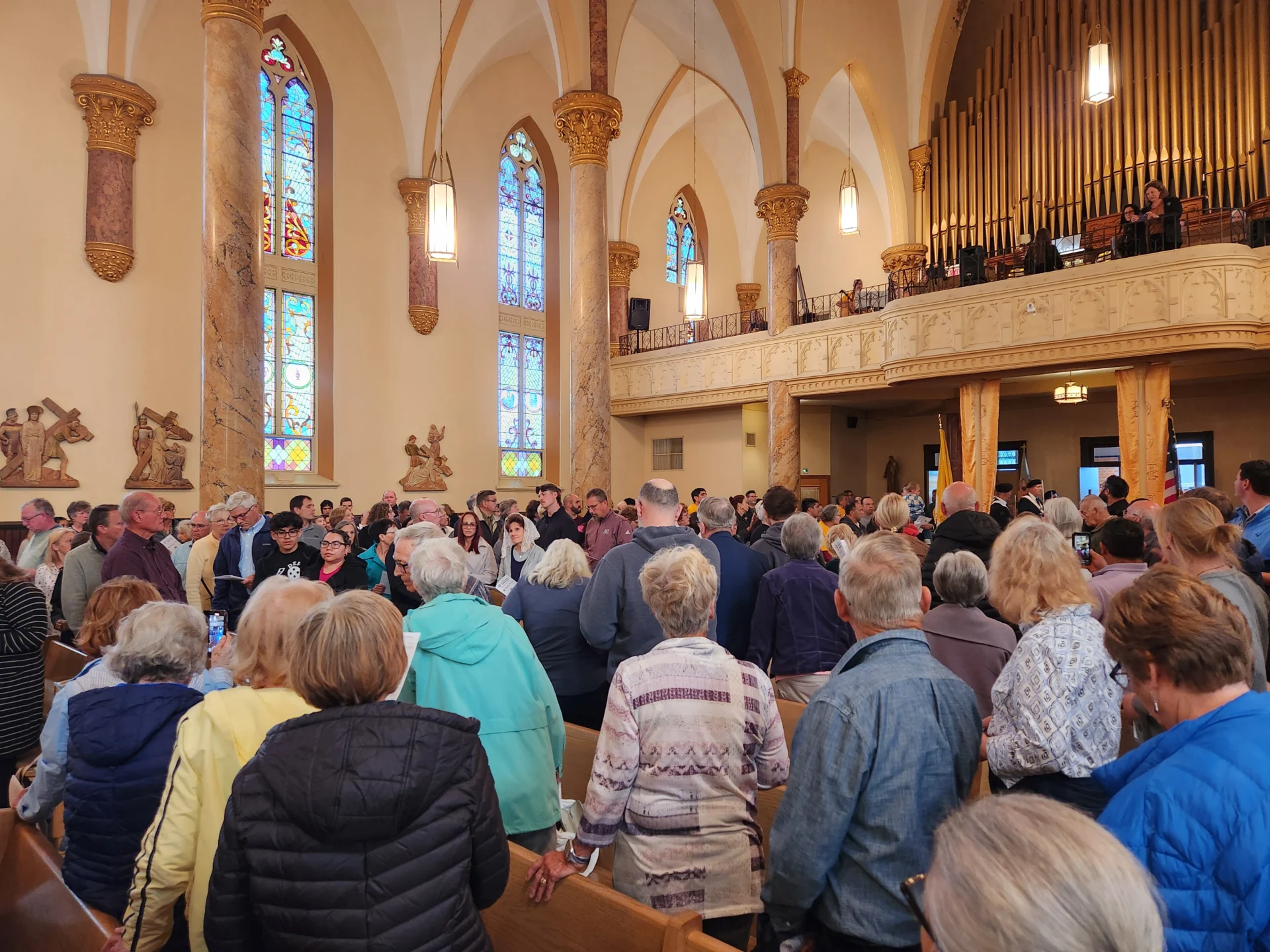
The day was electric, with the interior of the Church filled with local parishioners and visitors from across the Diocese and beyond (even surrounding states). As the music started, and priests proceeded down the aisle to the altar, it became emotional.
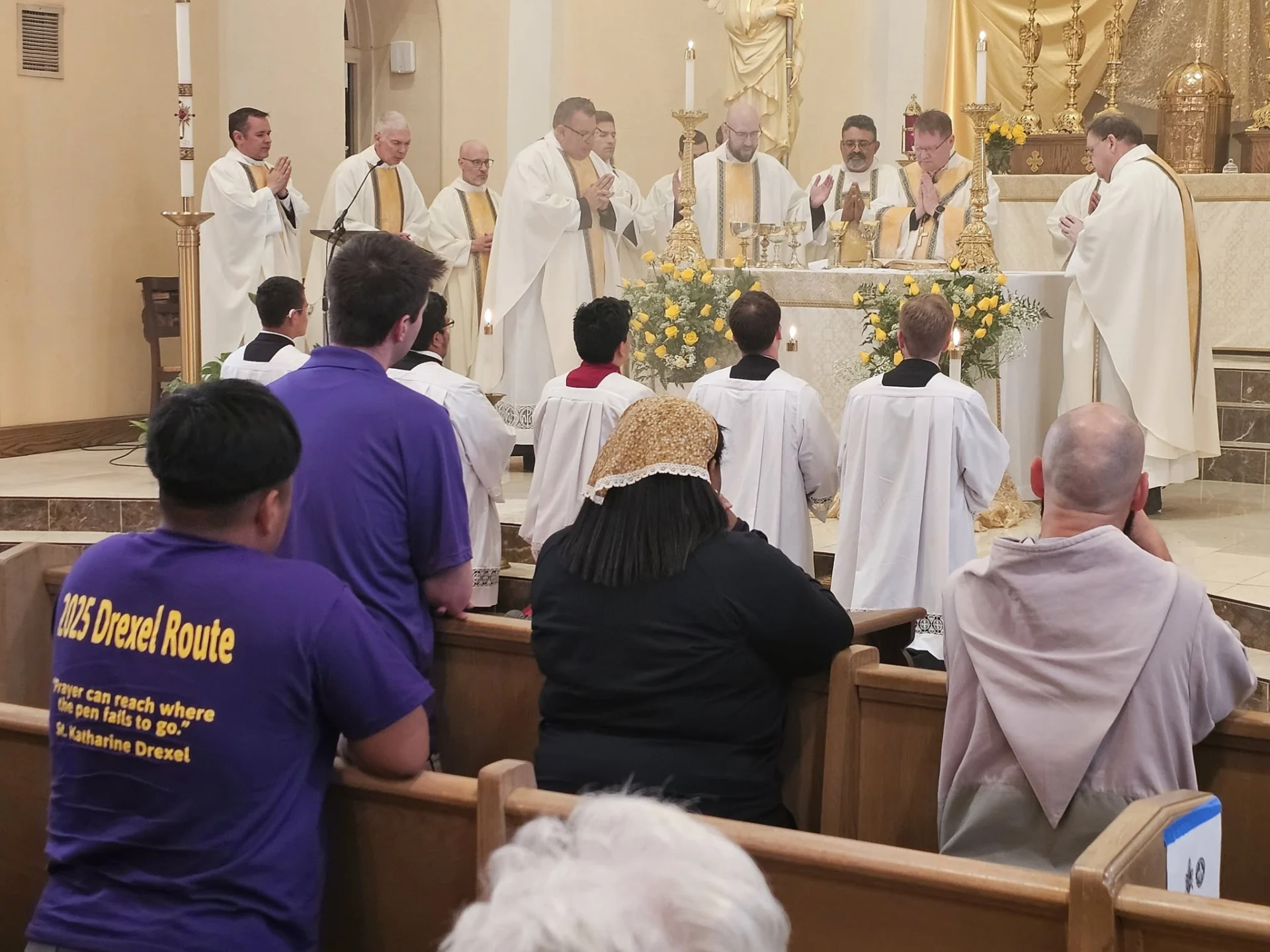
Readings were read in English and Spanish, and songs were sung in English, Spanish, and Latin (the ancient language of the Church) as one people connected if by nothing else but one piece of bread that literally means the world.
As Mass ended, the Eucharist was placed into the Monstrance and the faithful followed the bishop and the priests out of the Church.
The faithful walked behind the Eucharist singing songs and praying.
Credit: FAMIGLIA
As the faithful walked slowly, the town around was respectful.
There were neighbors coming out on porches and interacting with priests and seminarians as they answered questions about what was happening. Local police helped stop traffic.
Small moments like this bring together people from all walks of life. A small moment of reprieve and a public proclamation of what those who participate believe.

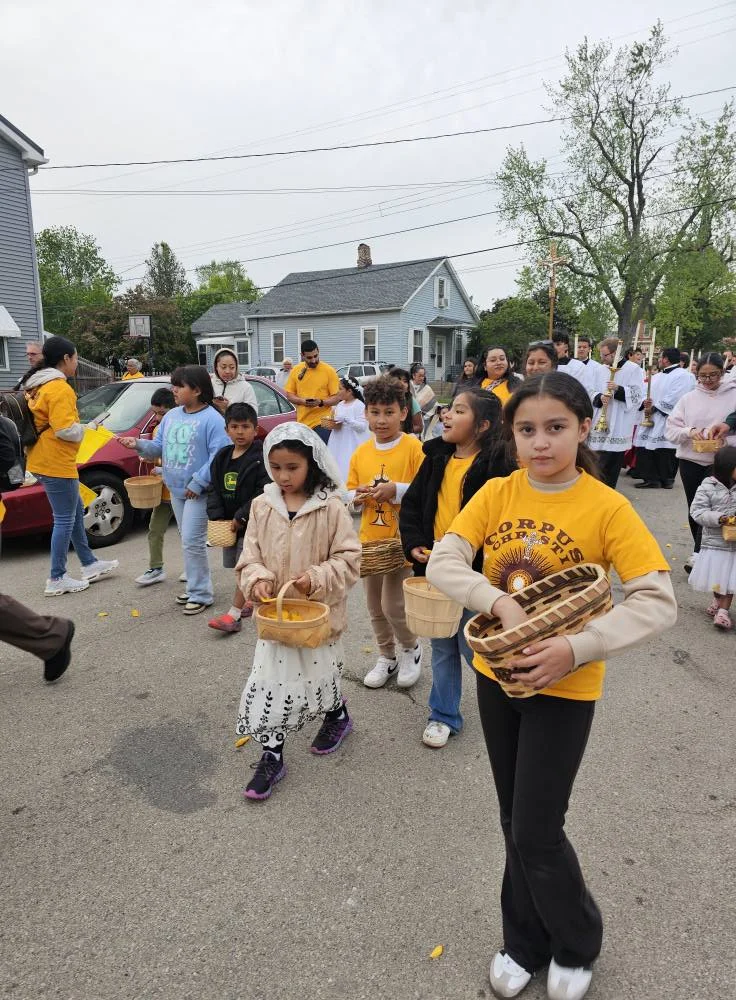
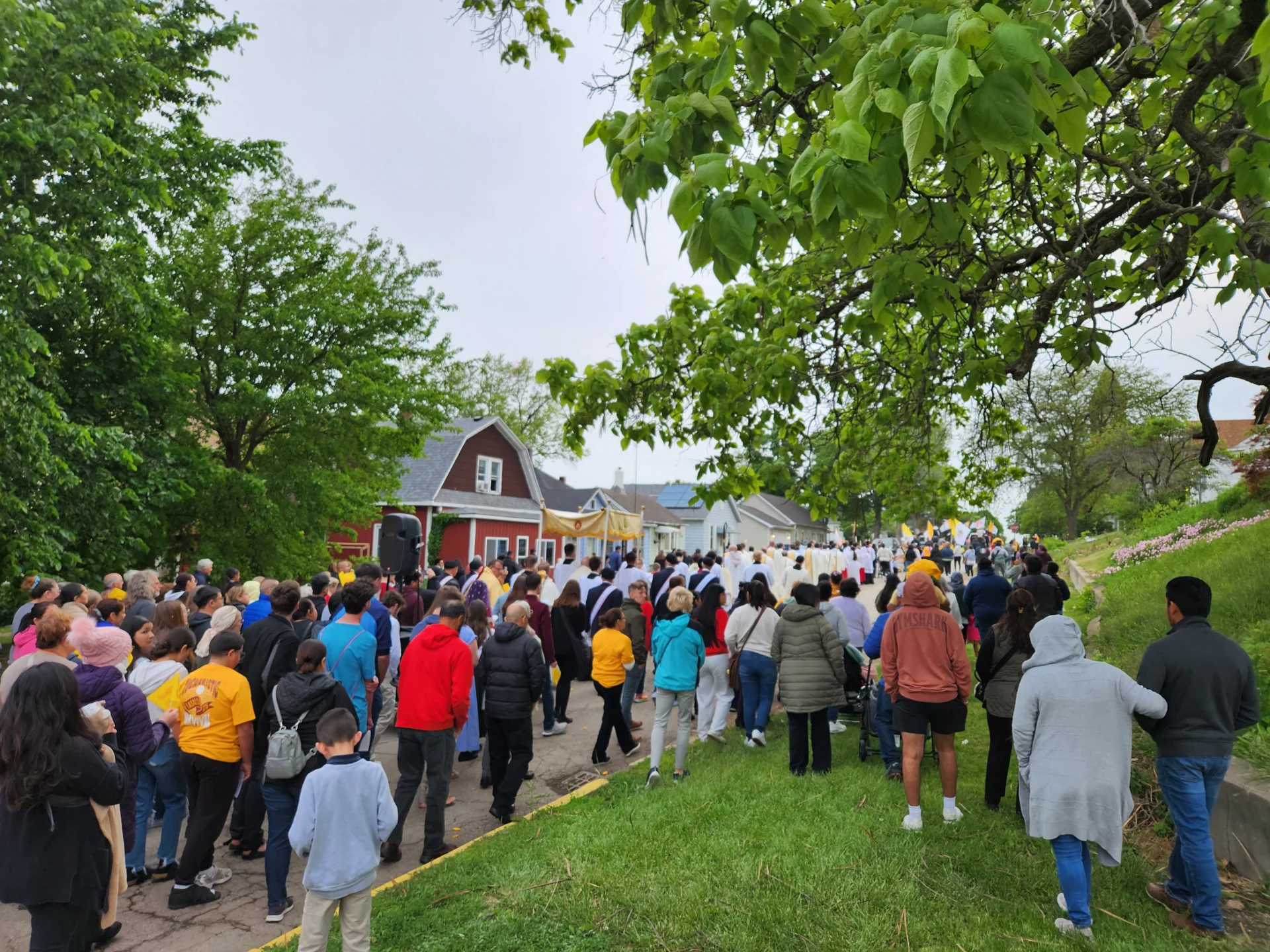
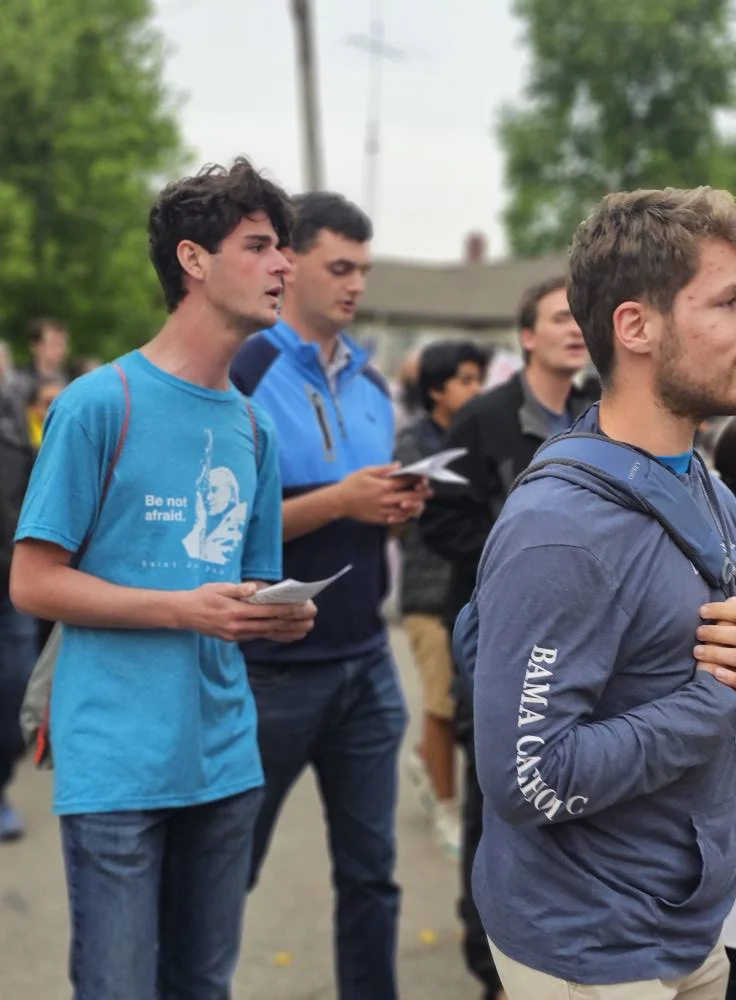
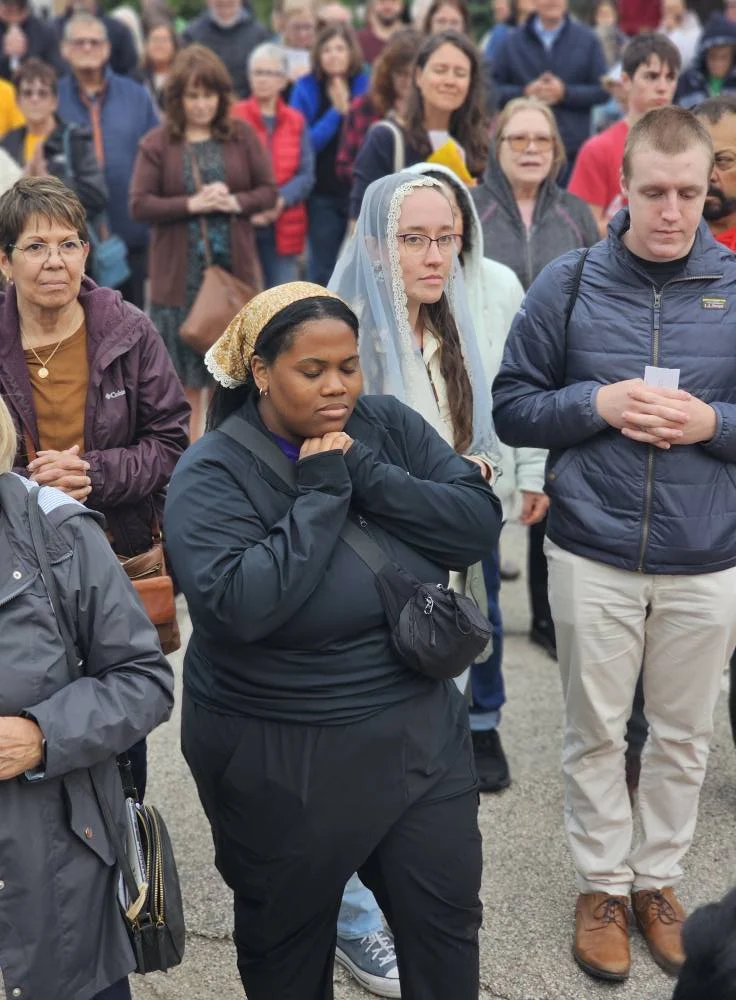
The procession continued to snake it’s way through downtown La Salle, eventually concluding at Queen of the Holy Rosary Shrine, an Italian church which includes a replica mosaic of Our Lady of Pompeii in the high altar and built of fifteen different marbles. The shrine was dedicated to all living and deceased military veterans of the U.S. Armed Forces.
A benediction concluded the short procession.
Credit: St. John Baptist de La Salle Parish
Afterward, there was a feeling of unity; a closeness to one another and to something greater. Once the Eucharist was reserved inside the Church, the pilgrims dispersed and enjoyed a fellowship meal prepared by local parishioners.
Events like this make up the National Eucharistic Pilgrimage.
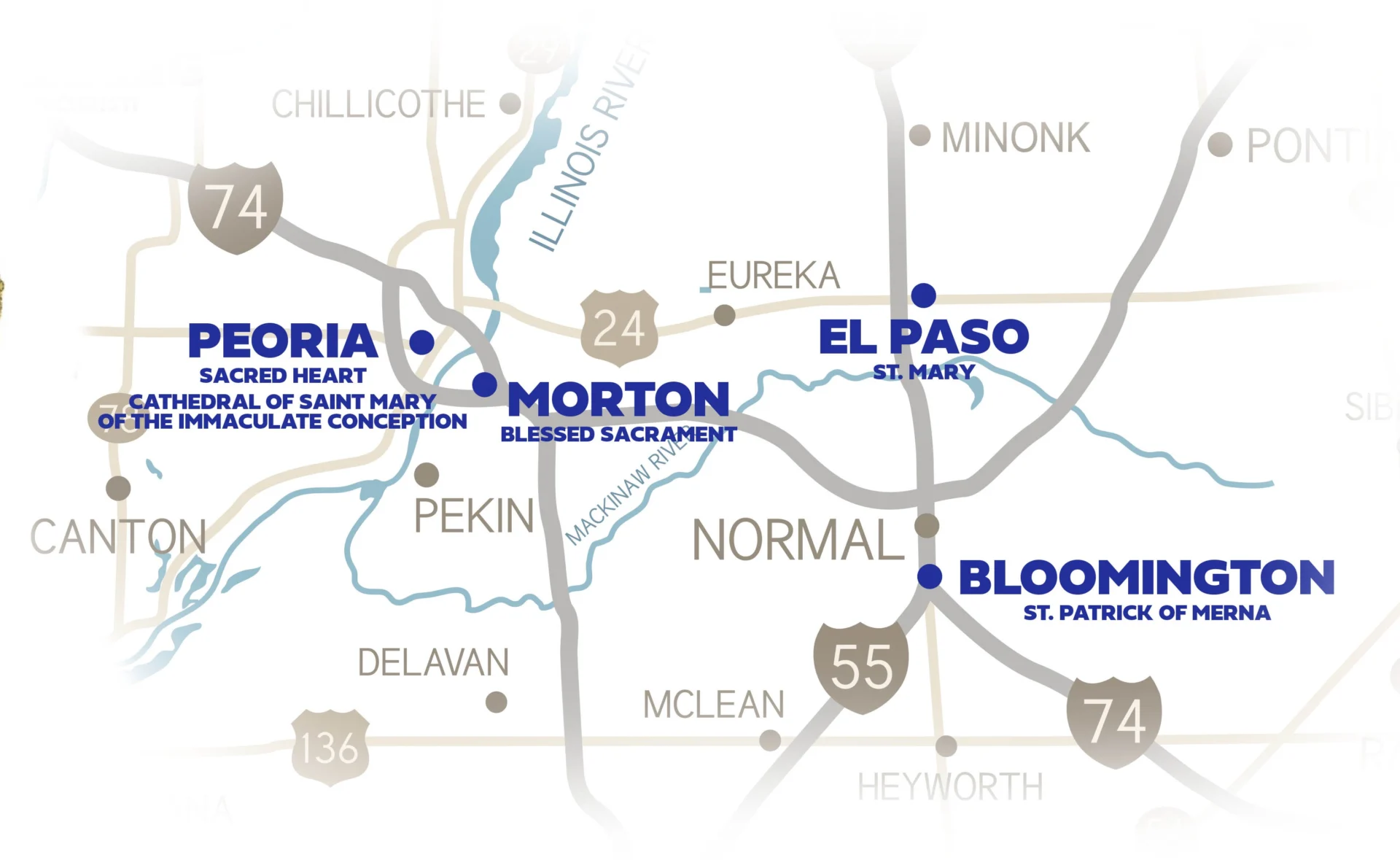
III. “He goes where you go”
“…Holy Spirit, you knew what you were doing…”
La Salle was just one stop on the larger journey.
Day two and three of the Pilgrimage within the Diocese of Peoria included visiting locations of importance to both the Diocese and people in general.
This included six area schools – allowing for the Eucharist to be taken through the hallways, time of adoration, and allowed students to sing and worship.
There was also a stop at both the place where Venerable Fulton Sheen was baptized (in El Paso) and at the location where Sheen’s remains are located (Peoria).
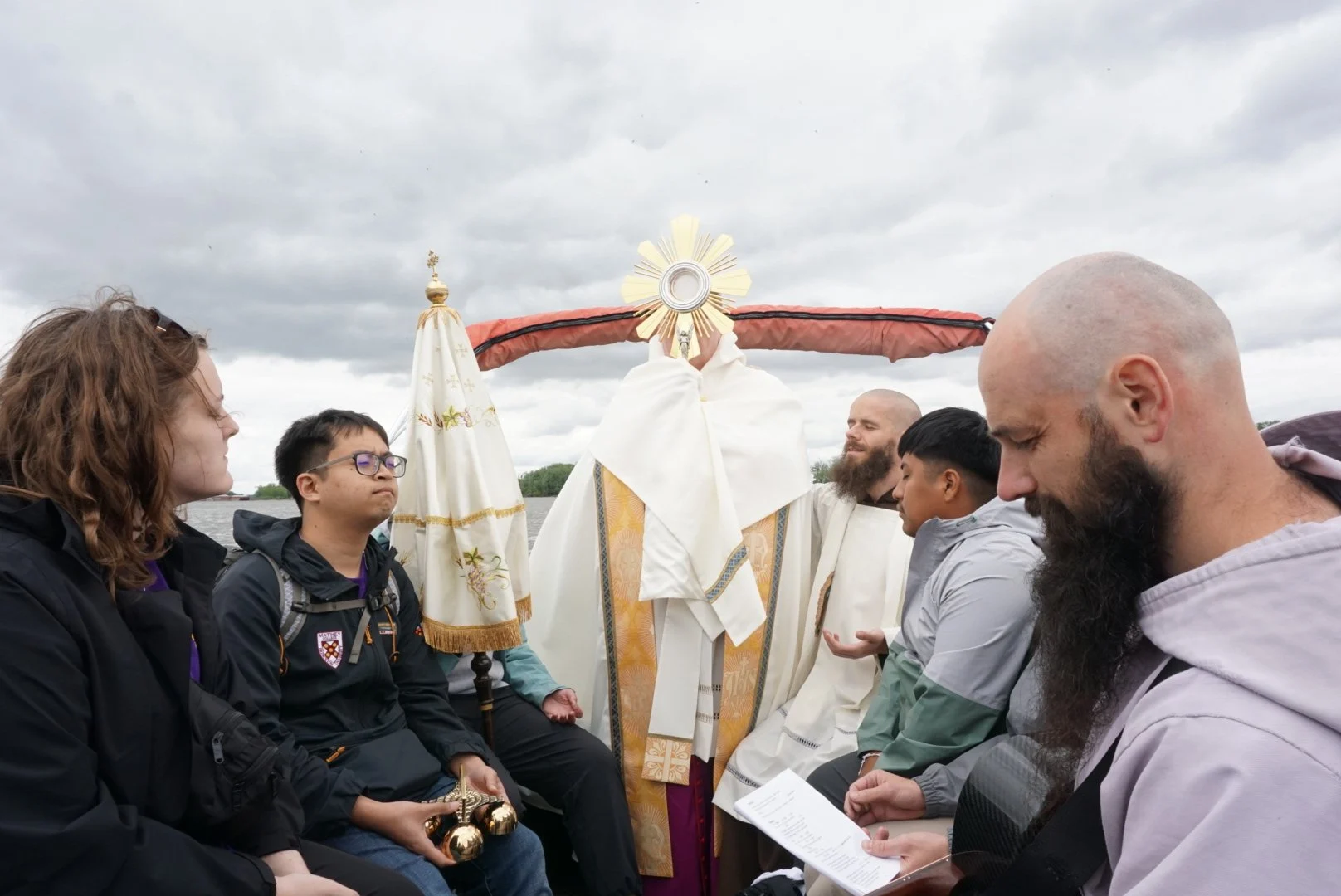
CREDIT: September Nott / Catholic Diocese of Peoria
The whole Pilgrimage was like this – bringing the Lord into these little vignettes of the everyday lives of everyday people.
That is, after all, the purpose of the Pilgrimage.
“The Church, as pilgrim, journeys within history, not outside of it,” wrote Sr. Kathryn J. Hermes of the 2024 Pilgrimage. “Thus the National Eucharistic Pilgrimage is taking place on very real streets, passing by individuals who are offered the invitation to either look or look away.”
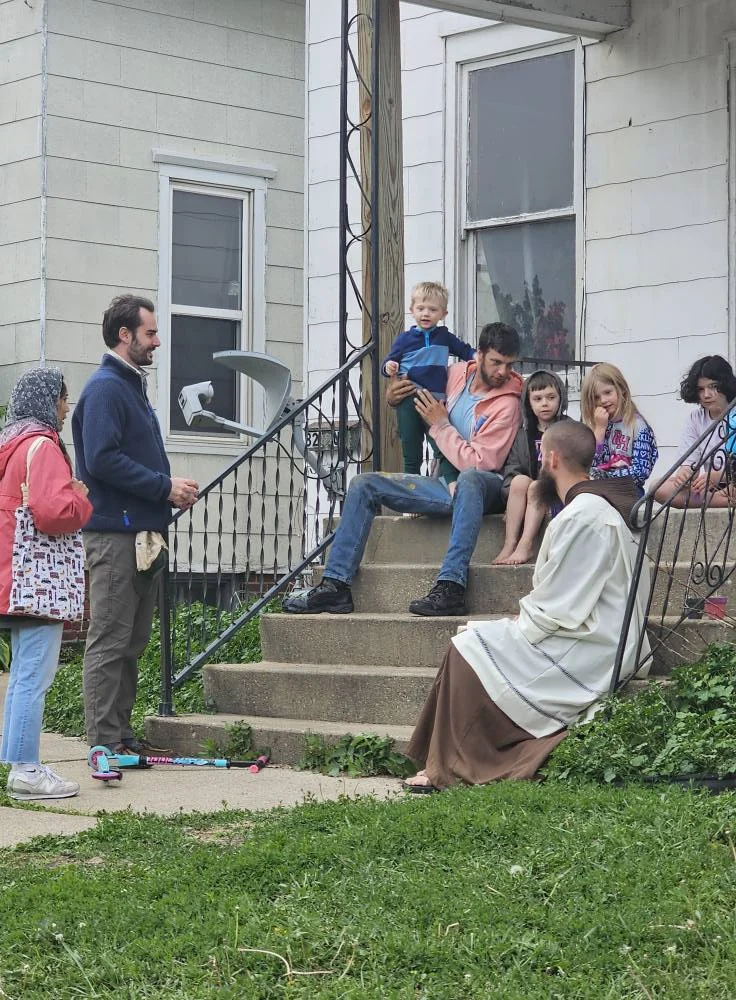
Each location the Eucharist traveled during the Pilgrimage was an opportunity for Jesus to touch the lives of everyone. One need only zoom in to see the impact.
The public, people who were able to confess their sins to a priest on the journey, some who may have never known the Church before, and neighbors who saw the procession pass by, were able to witness Jesus inside the scope of everyday life.
The Eucharist even rode in a medical helicopter to bless the Diocese from the air, visited patients at OSF Saint Francis Medical Center in Peoria, and traversed the Mississippi River in a small fishing boat.
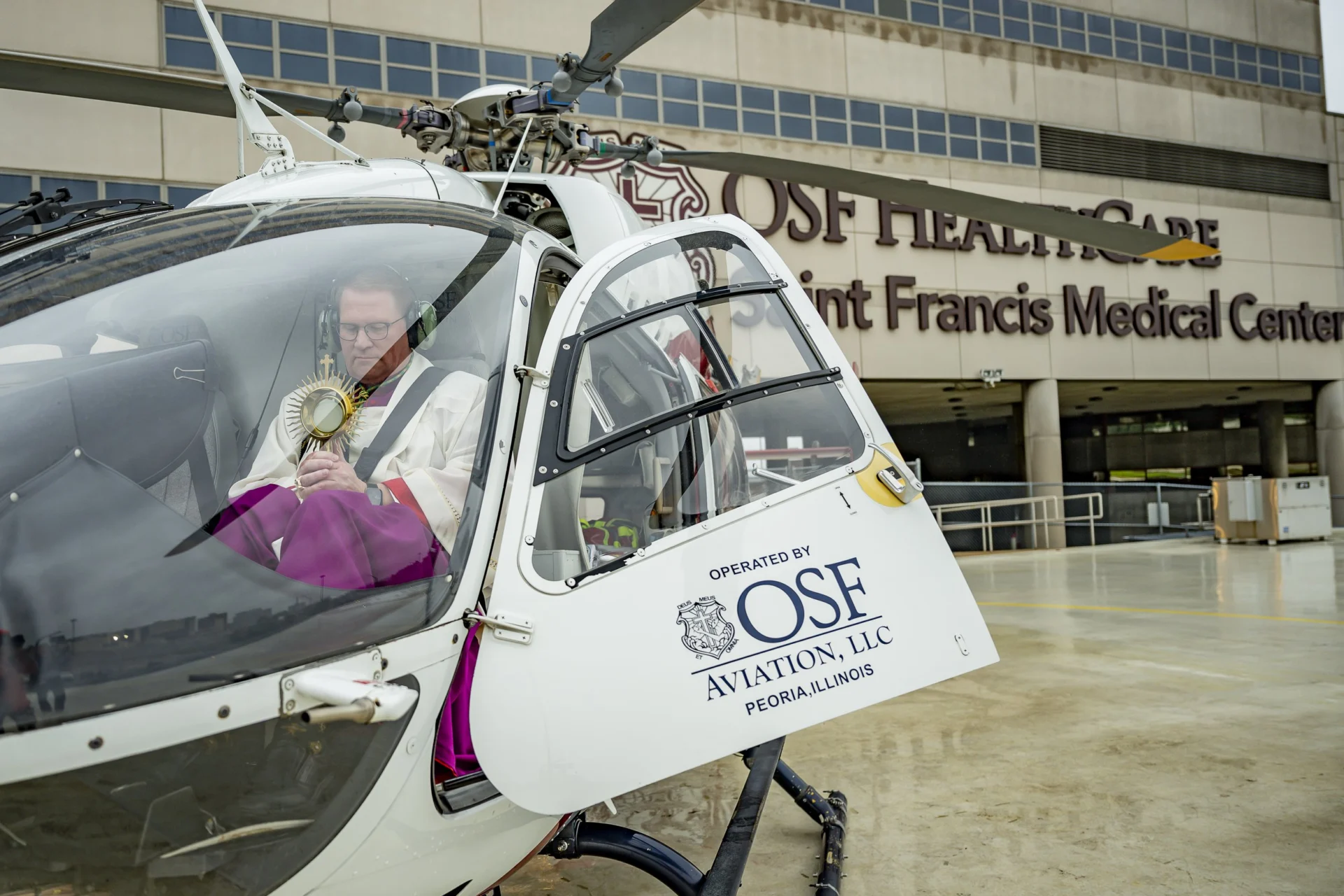
CREDIT: Jim Carlson/OSF HealthCare & the Catholic Diocese of Peoria.
At the end of the day, the mission is in the witness.
There was plenty of opportunity for witness on the journey, through the good and the bad. Even in the midst of suffering, which was something new during this Pilgrimage.
As the Pilgrimage neared Dallas, Texas, and beyond, worshipers were followed by an organized group of hecklers. And yes, even in suffering and ridicule, faithful Catholics provided silent witness to the love and suffering of God.
Story continues after this module
Many of the Perpetual Pilgrims, though they said words stung, said of the situation that it drew them closer to Jesus on the Cross.
Some might say the Holy Spirit prepared them ahead of time to face this Cross. Father Michael Herlihey, OFM, who went on the journey with them, felt called at the start of the Pilgrimage to give a homily to the Perpetual Pilgrims about embracing crosses. He told the Catholic News Agency of the young peoples’ strength: “Here we are …weeks later [from the homily] and they’re experiencing crosses. They’re carrying their cross amidst a white martyrdom right now with all the counter-protesters. It’s just like … ‘Holy Spirit, you knew what you were doing.’”
Just being in the presence of the Lord is healing – this was a major mission of Venerable Fulton Sheen.

IV. “A Hunger for More”
“…it is the true center of existence for me; all the rest of life is expendable…”
The entire purpose of the National Eucharistic Pilgrimage is to bring revival around an important truth: that the Eucharist is the body, blood, soul, and divinity of Christ.
Many people, Catholics included, don’t understand the implications of this.
There’s a well known story about the American novelist Flannery O’Connor. During a dinner party that she attended someone said that the Eucharist was a “pretty good” symbol.
“If it’s a symbol, to hell with it,” O’Connor said back.
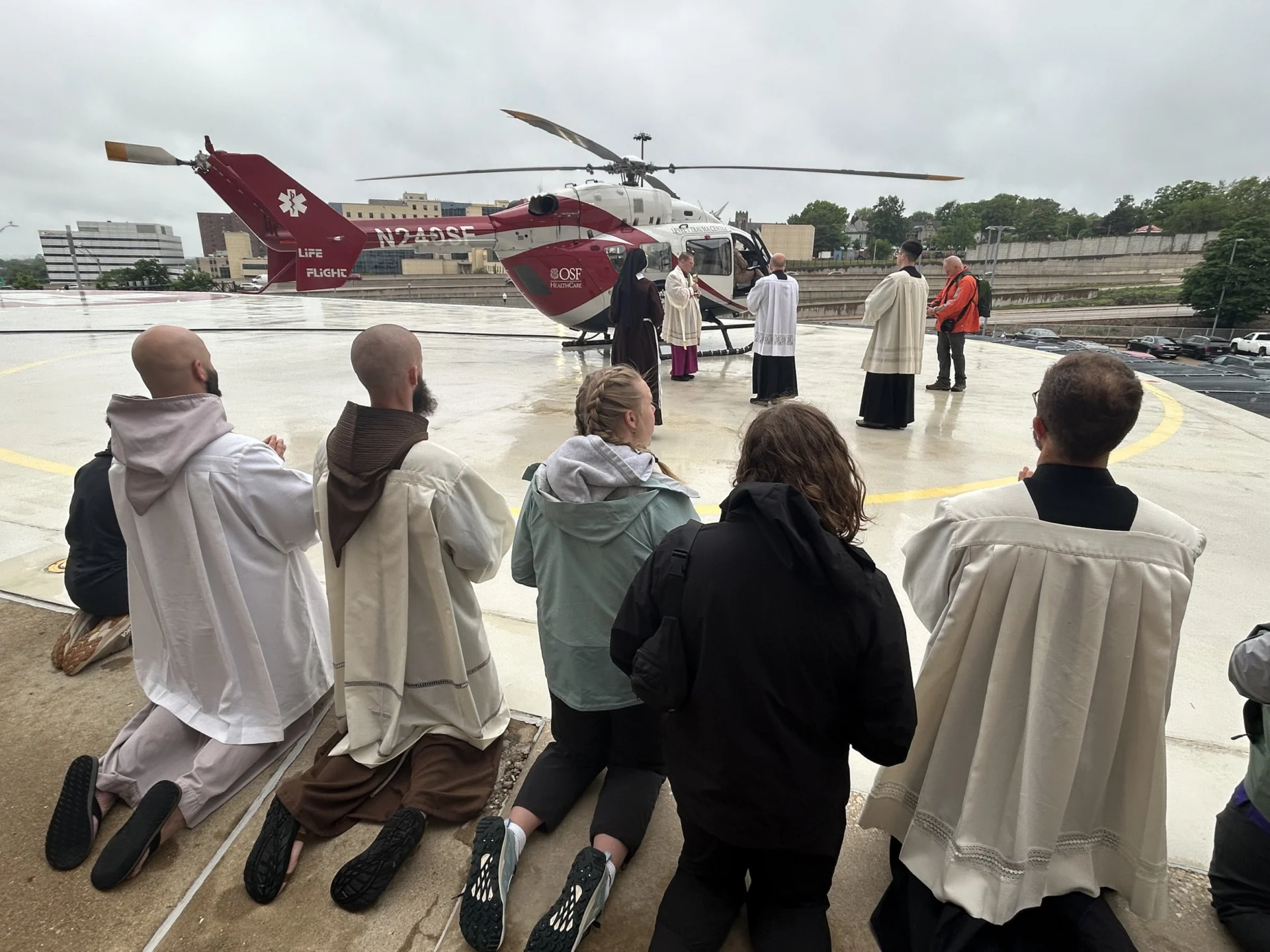
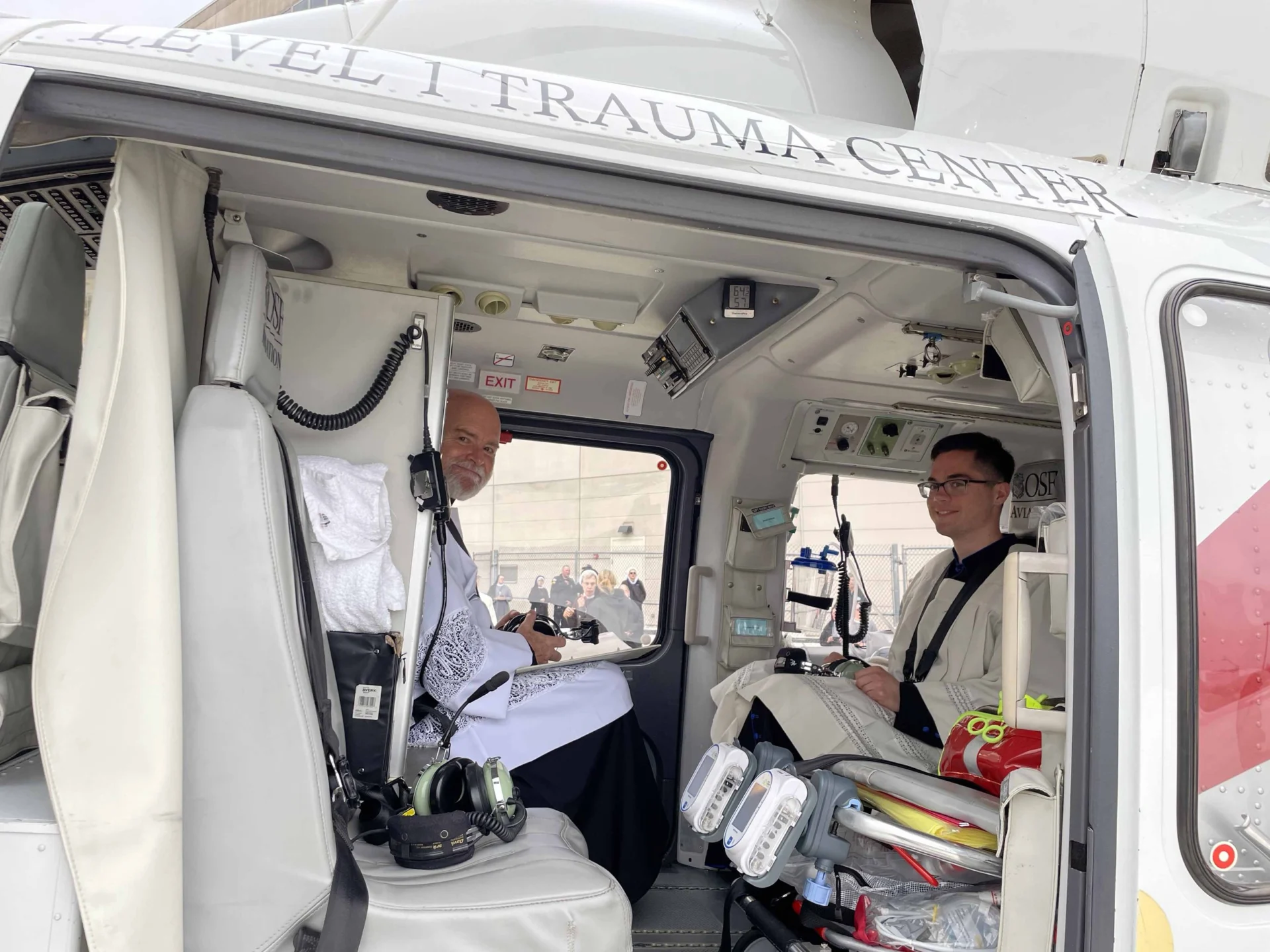
And, she’s right. Observed from any other vantage point, the Eucharist makes no sense. It’s steeped in tradition and according to Catholic doctrine, the Host is Jesus. Not represents Jesus… is Jesus.
She wrote to her friend later:
“That was all the defense I was capable of but I realize now that this is all I will ever be able to say about it, outside of a story, except that it is the true center of existence for me; all the rest of life is expendable.”
“There is a hunger that is out there for something more than what the world presents,” Bishop Tylka said to The Catholic Post of the Pilgrimage. “I think that hunger, especially among young people — they are discovering that the only way to feed that hunger, it’s a spiritual hunger, a hunger to be united with God — is to find a home in church, and they are finding that in the Catholic Church.”
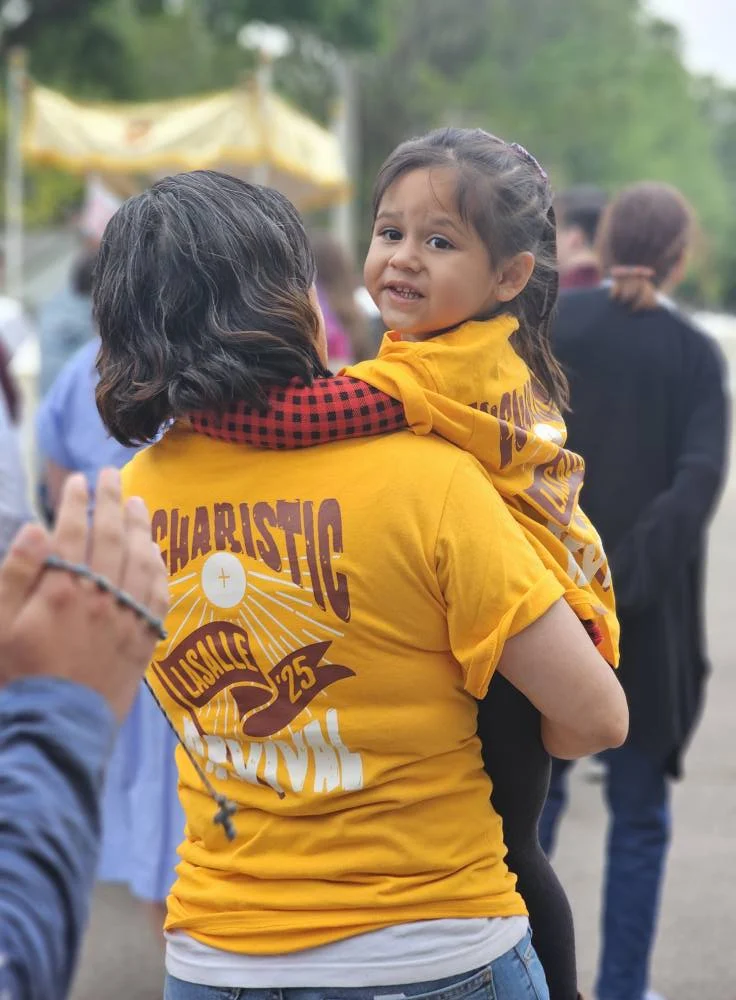
Ven. Sheen once said, “We become like that which we gaze upon. Looking into a sunset, the face takes on a golden glow. Looking at the Eucharistic Lord for an hour transforms the heart in a mysterious way as the face of Moses was transformed after his companionship with God on the mountain.”
The National Eucharistic Pilgrimage may be coming to a close, but the real course it charted was in the beautiful vignettes of everyday life. This “glow” that Sheen talks about was certainly apparent for all those who participated in this historic event. In hospitals and classrooms, churches and cities, in quiet shrines or loud protests. It’s reflected in all those who gaze upon the Eucharistic Lord because it’s not of this time.
This is the true success of the Pilgrimage. Christ walks among his people. And in revival, they are walking with Him. ■
Special thanks to St. John Baptist de La Salle Parish and the Catholic Diocese of Peoria. Please join us in praying for the fruits of the National Eucharistic Pilgrimage as it comes to a close and for the Perpetual Pilgrims as they continue in their devotion of God.
■
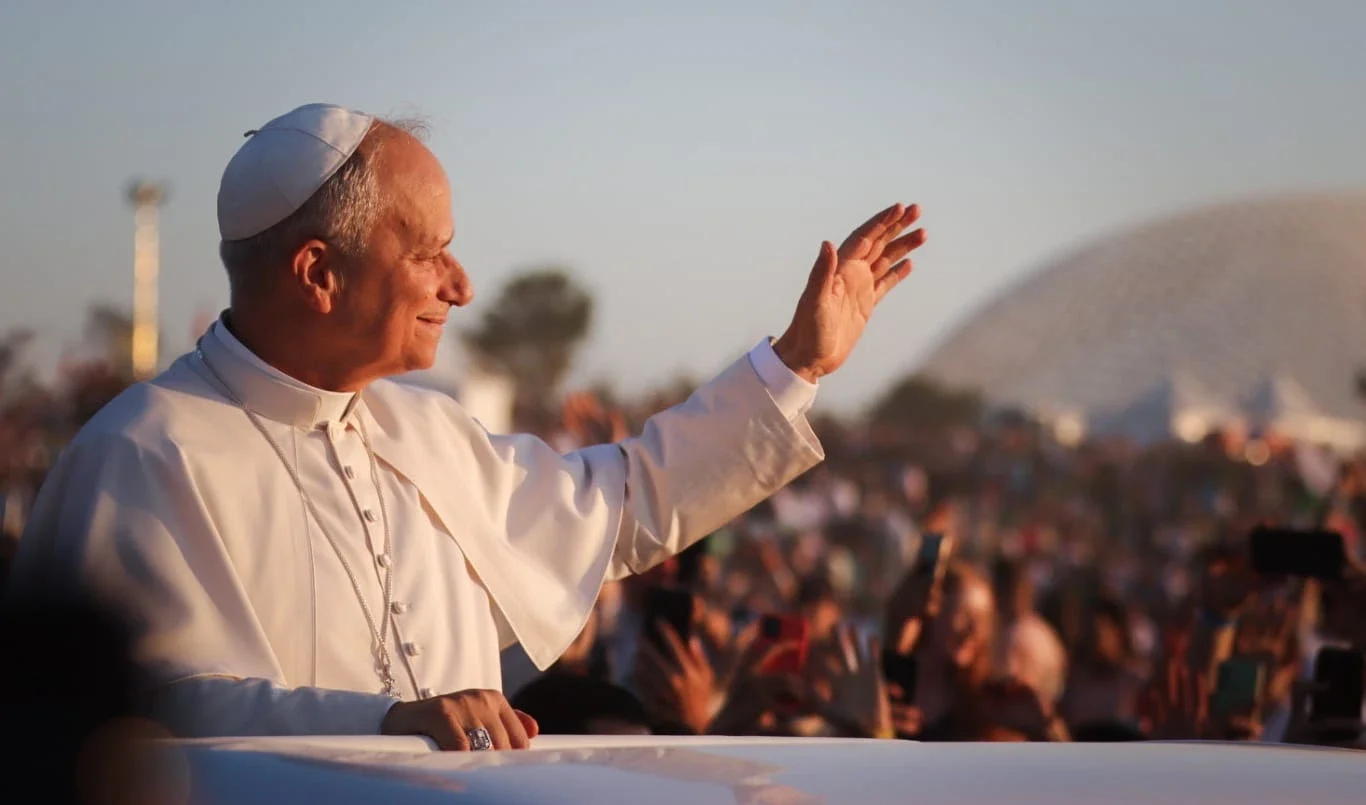
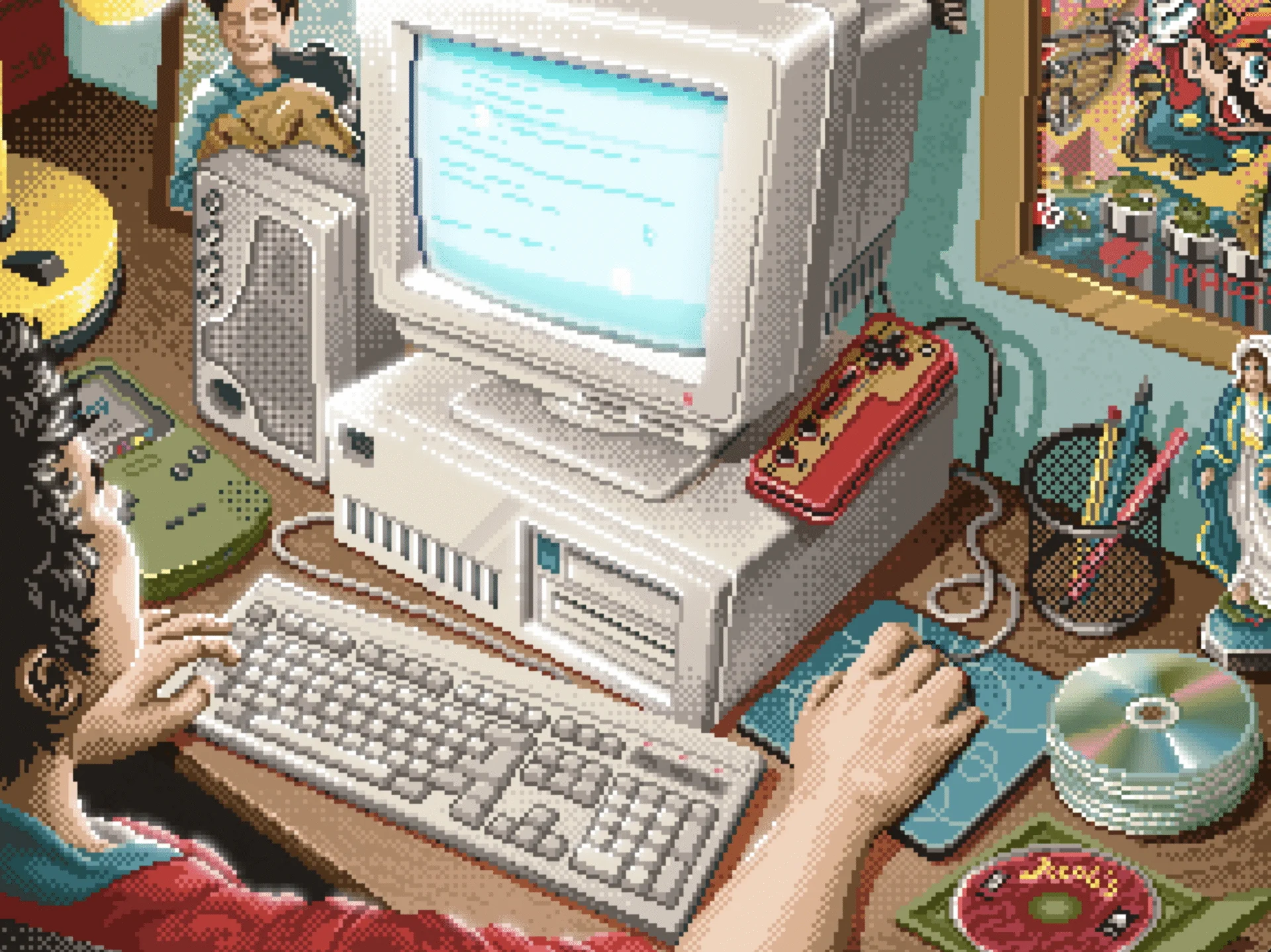
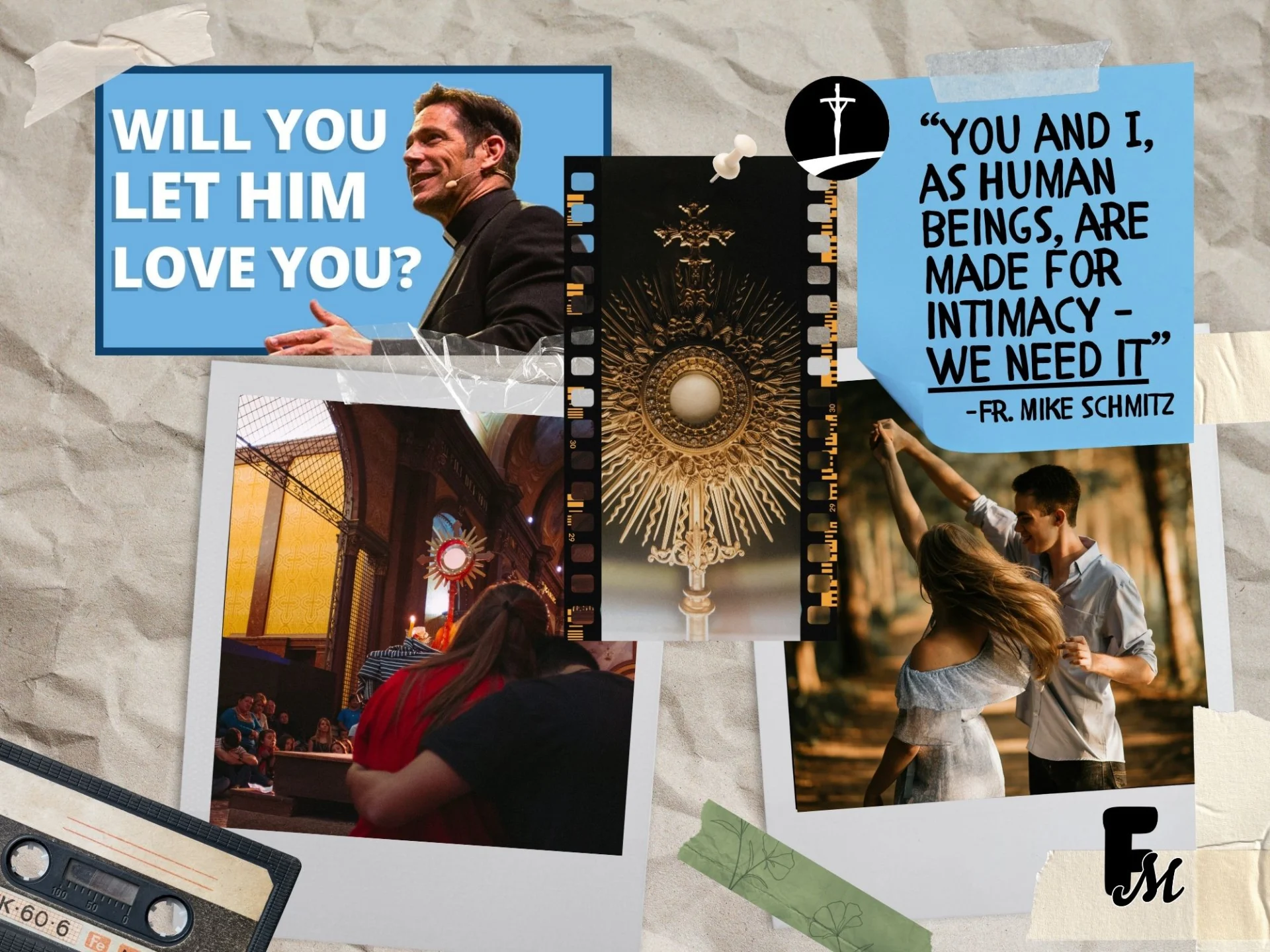


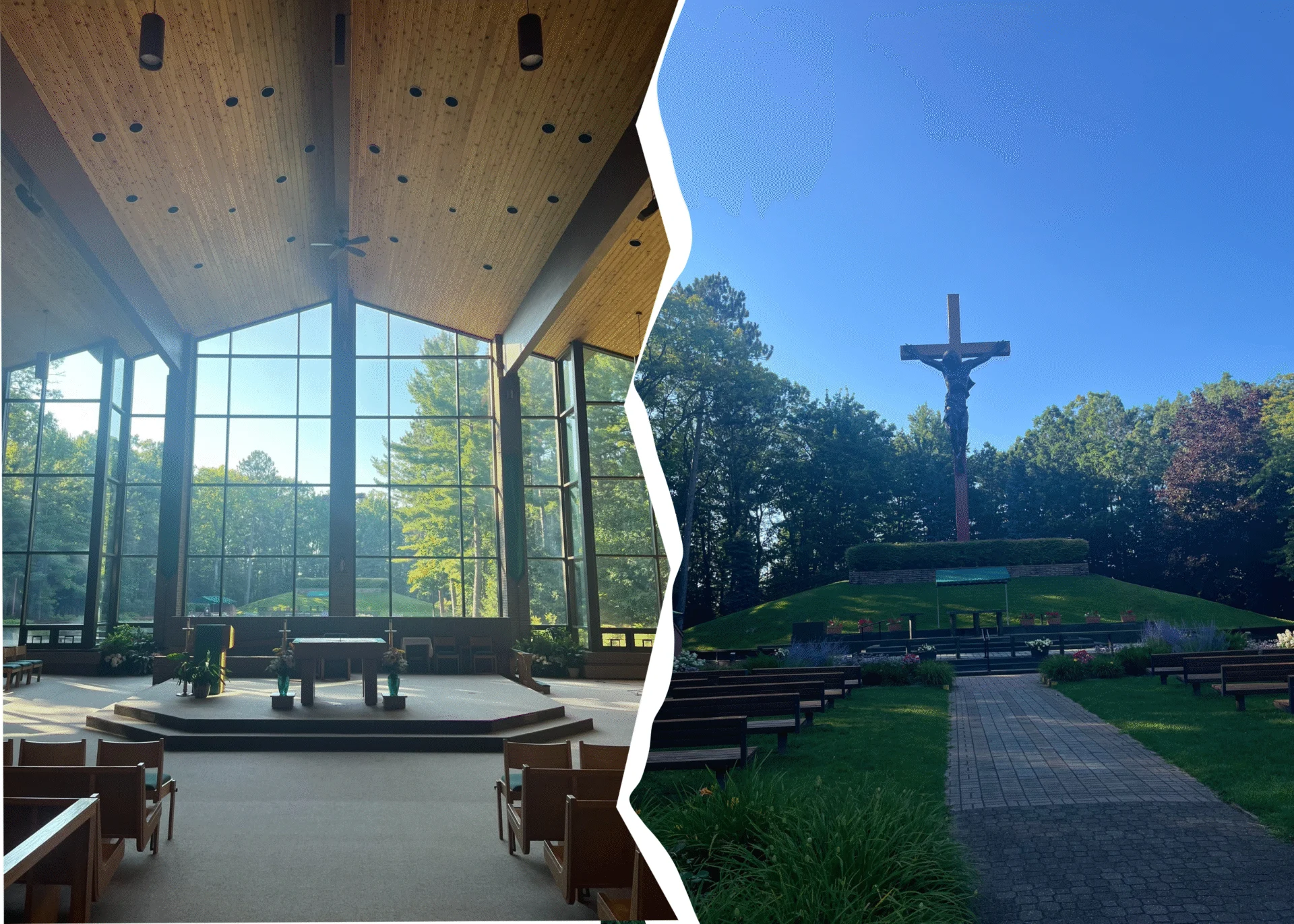

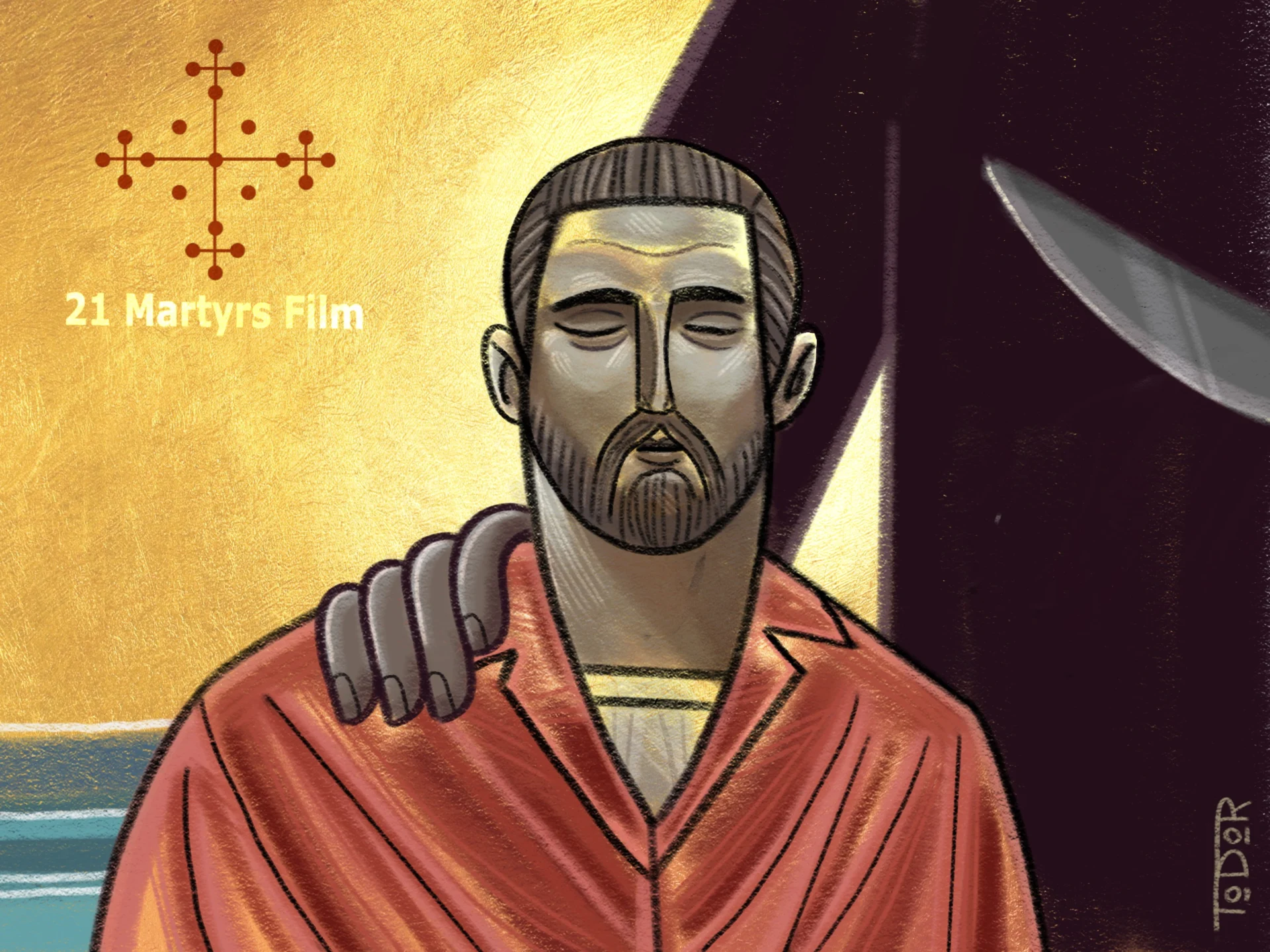
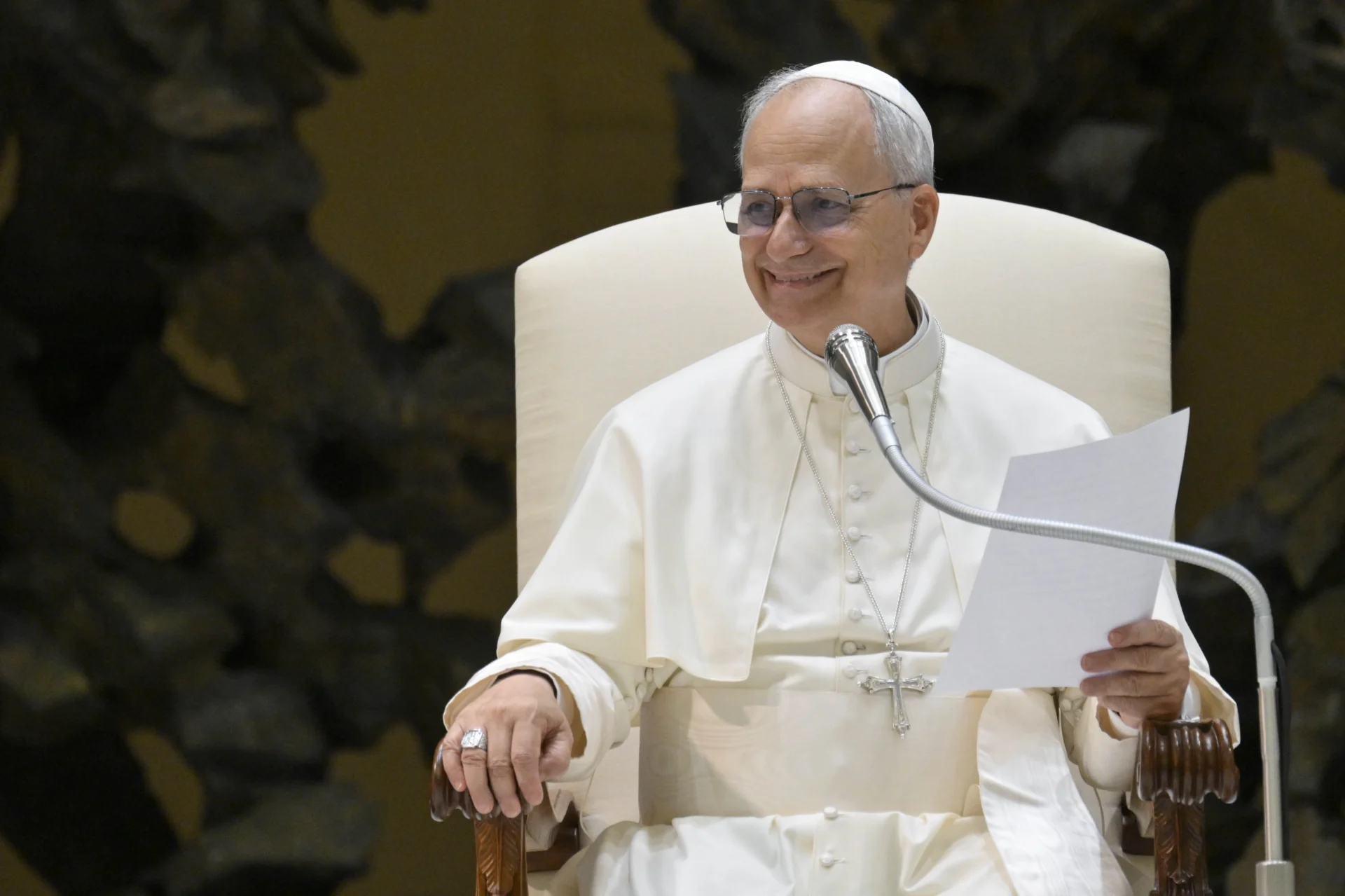

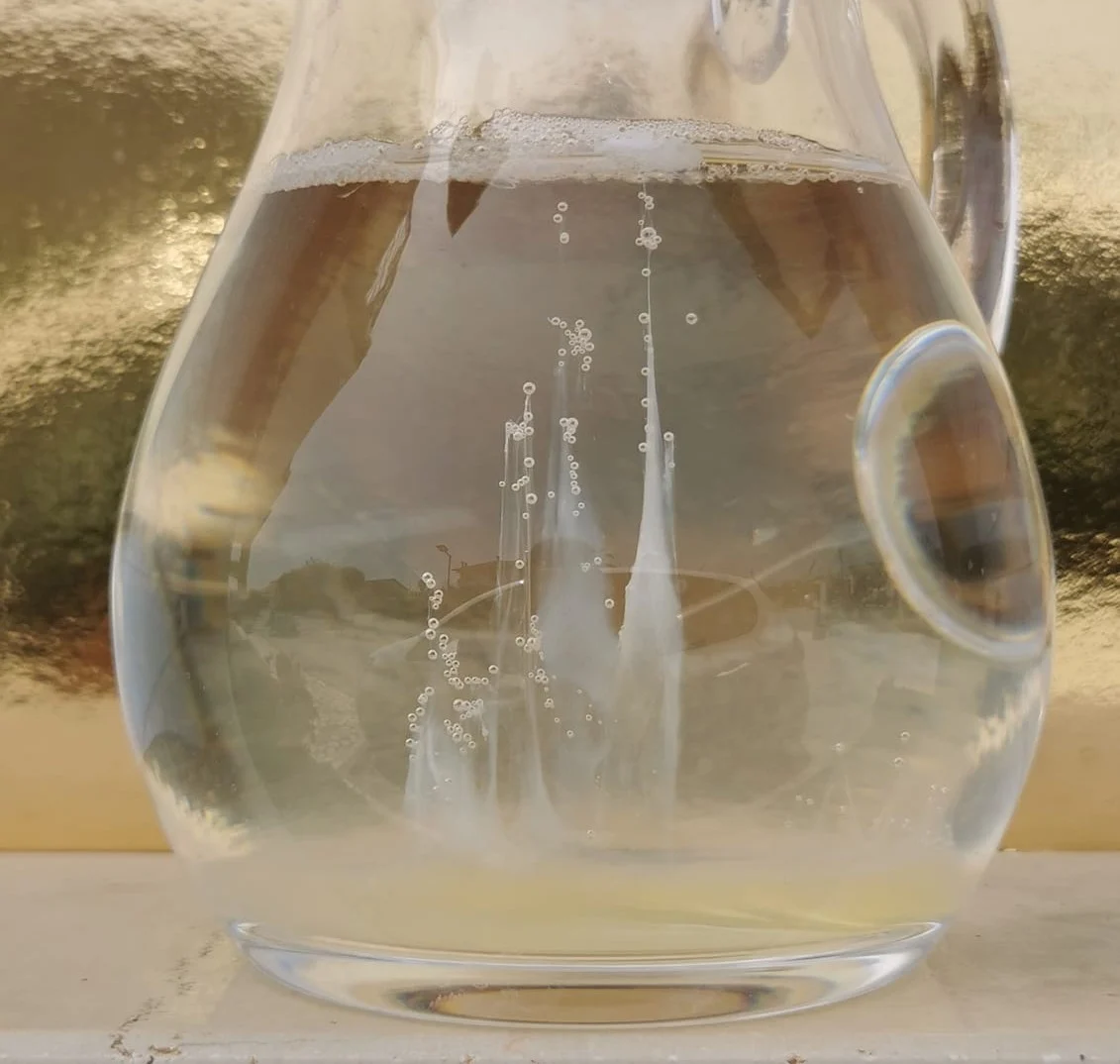


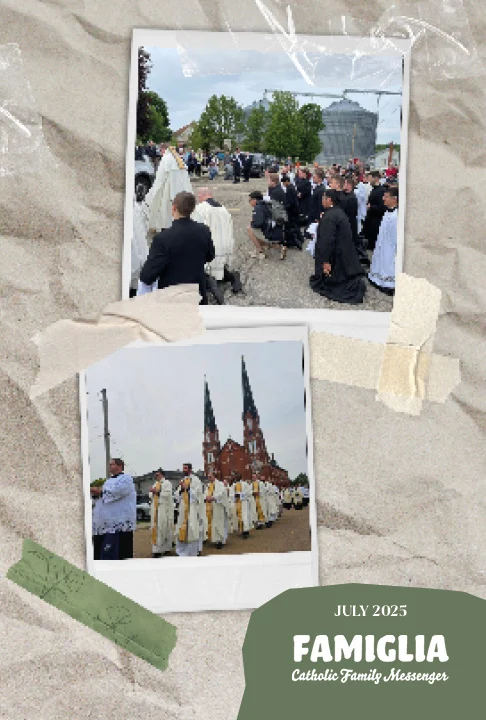
Join in on the conversation with a FAMIGLIA subscription!
Comments are restricted to subscribers. Simply subscribe now or login to join the conversation and join the community!